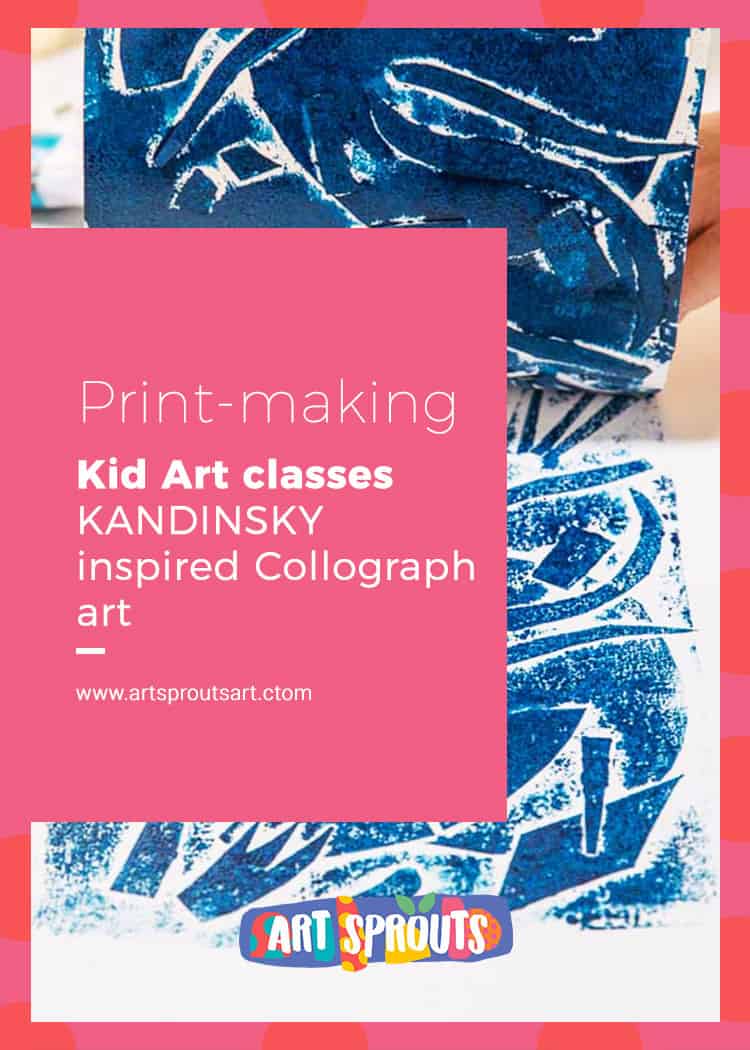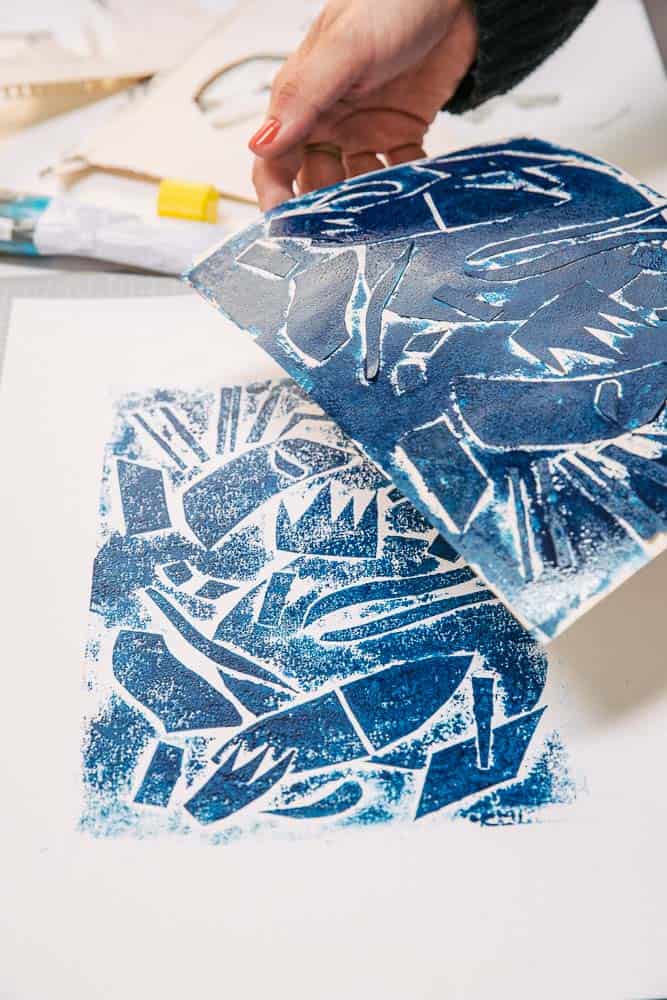
What is frottage?
From the French frotter, to rub, frottage is an art technique popularized by surrealist artists at the beginning of the 20th century.
At it simplest, frottage is done by lying a thin sheet of paper on a textured surface and gently “rubbing” over it with a soft pencil to highlight the embossed texture.
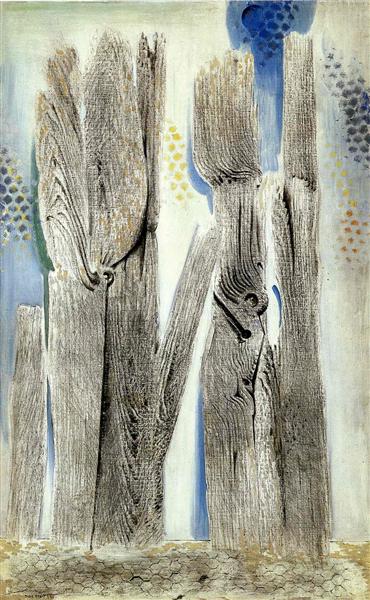
via WikiArt
You can find more info about the history and application of this technique here.
Frottage can be done with many different supports and pigments. For this project, we are using the printmaking ink and rollers technique.
Why Kandinsky?
I have previously dedicated a post on how to make color theory more fun and intuitive. Clearly, Kandinsky is the perfect artist to reference when discussing colors. However, the monochromatic quality of frottage is perfect to reflect on a different aspect of his art: shapes and composition.
.jpg)
via Christie’s
Why should you try this activity?
The concept is quite simple: cut out abstract paper shapes and rub some pigment onto them. Children of all ages can enjoy this technique and create artworks with various levels of complexity. The sky is the limit!
*Bonus point: this activity is also a great way to make use of leftover paper.*
How to get started with cut-out paper frottage art (wow, that’s a mouthful!)
Materials:
1 sheet of watercolor paper
2 sheets of “used” watercolor paper (dirty, drawn, tore, thick paper works perfectly)
Pencil for drawing
Scissors
Glue (I used common stick glue, but Elmer’s liquid glue works just as well)
Printmaking ink in darker shades. Like most times, I enjoy using Marie’s colors. However, the one I used is oil based and hard to remove. I believe it’s better for artworks, but I wholeheartedly recommend using water-based printmaking ink when working with kids.
Spare ceramic tile or acrylic board, plus solvent for cleaning.
Frottage tools: I found that the rounded edge of color containers work pretty well.
Reference material if you wish to use it. “Vibrationen 160“, “Violett,” and “Blue Painting” are some of my favorite paintings for this project.
Instructions:

Use one of the dirty papers to draw shapes inspired by the artist’s work. No need to be too precise, some outlines will do. Remember however to separate each detail and layer into different shapes. 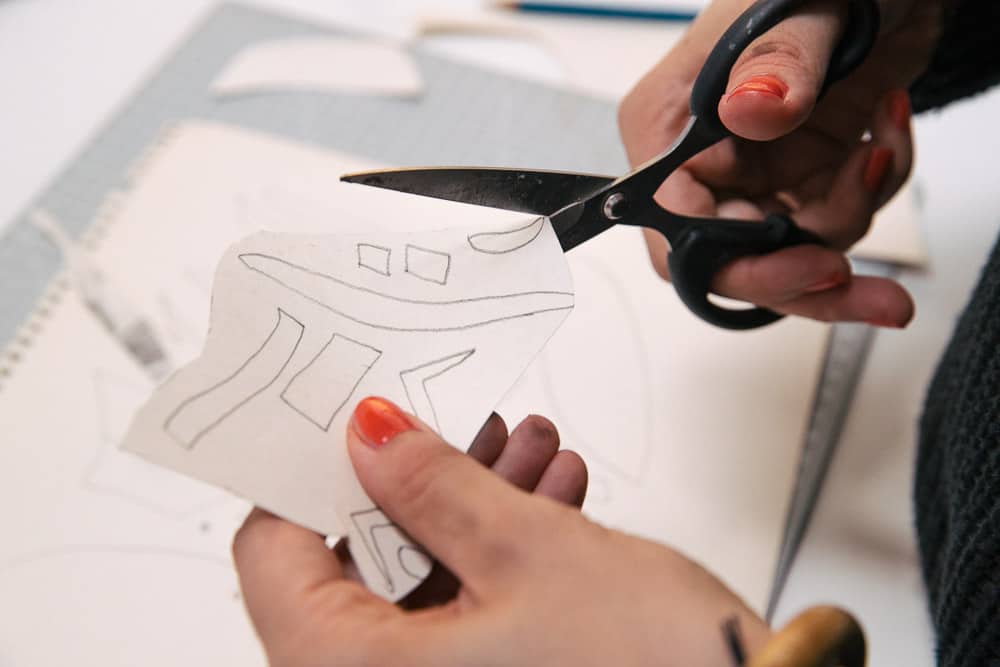
Cut out the shapes, keep related pieces organized together. Don’t throw away scrap paper away too soon: save them to add some extra pieces and details, or for the kids that might be running a little behind.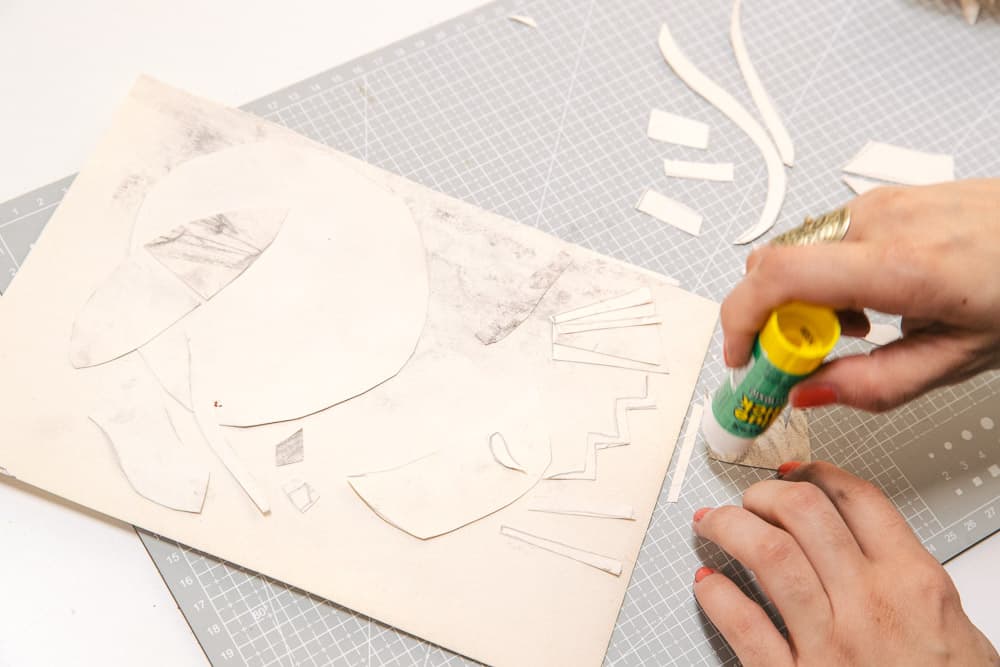
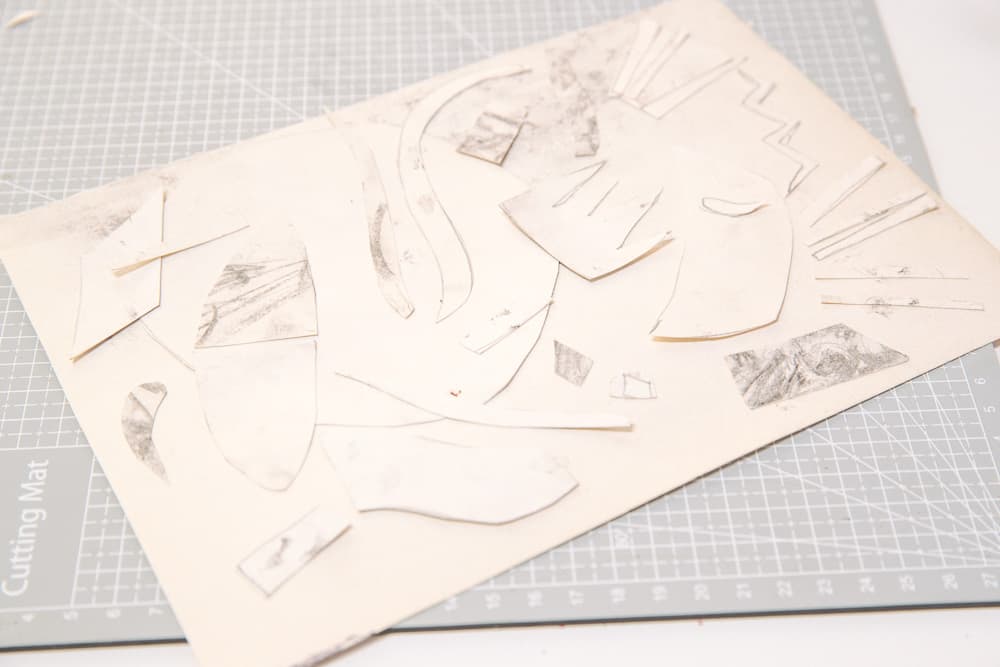
Arrange and glue the paper in place onto the remaining sheet of reclaimed paper; a bit of glue in the back will do. Note: the size of this paper will determine the size of your final print: I like to size it a couple of inches smaller than my final artwork paper to leave a clean white frame around the print.
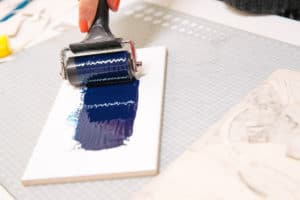
Once the paint is evenly spread, you can start rolling over the paper composition.
When using oil based ink, I am usually the one preparing the pigments, with the exeption of more experienced print-making students. Start by squeezing a glop of paint on the tile and spread it out with the roll. You will note how sticky this paint is. That’s why is paramount to use a roller instead of a brush!
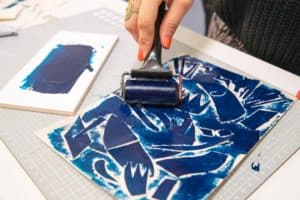
The painting should be applied evenly and rolled in multiple directions to minimize white spots.
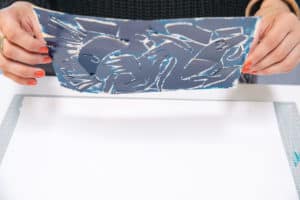
turn the negative onto your final paper making sure not to slide it over
The paint doesn’t need to be too thick, but try to roll in multiple directions to minimize white spaces around cut-out shapes. Print-making ink dries very slowly, so there is no need to rush through this process. Once you are happy with the coverage,flip the paper in place onto your clean watercolor paper. Be careful not to move it until you are done rubbing.

Press and rub the back of the negative onto the paper making sure to cover every spot. I like to use a paint container, but any rounded item would do.
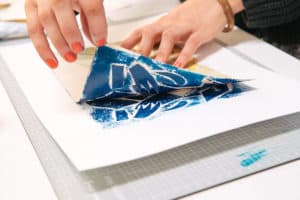
Carefully lift a corner for a quick peek!
Now comes the fun part! Using a rounded plastic tool, rub the back of your negative print. To transfer as much detail as possible, make sure to press on the edge of the shapes particularly well. Now and then, check on your progress by carefully lifting the corners. Be careful however not to move the negative. Children are surprisingly curious (duh) and will want to peek over and over again; to minimize the risk of shifting the negative, I like to use a little bit of paper tape to hold it in place.
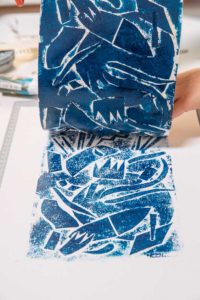

Once you are happy with the level of details, carefully lift the negative. Hang the print to dry; it will take up to 72 hours to dry completely if you used oil based ink, so some patience is necessary. The brilliant news, is that tThe negative can be used over and over again to create new prints. You can even use different printing colors once the negative has dried.
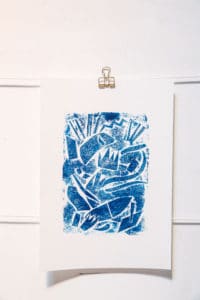
So this is how I have come about frottage printmaking with my students. I personally enjoy this class for how easy it is to adapt it to different age groups, and also, I love the polished look that print-making artworks have.
What do you think? Have you tried frottage in your projects before? What is your experience? Would love to hear your suggestions and feedbacks in the comment section.
Save For Later
